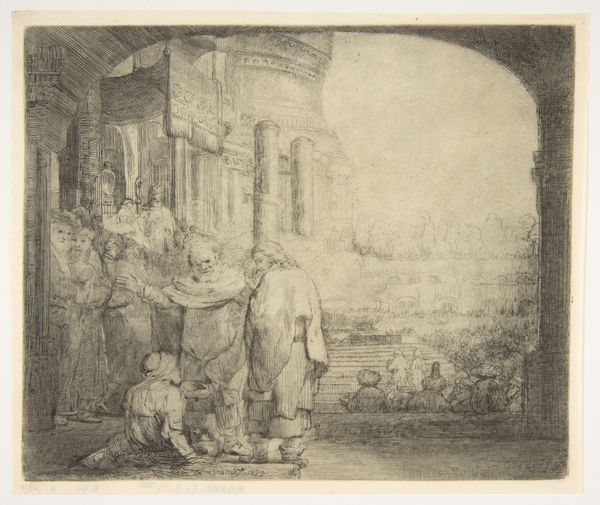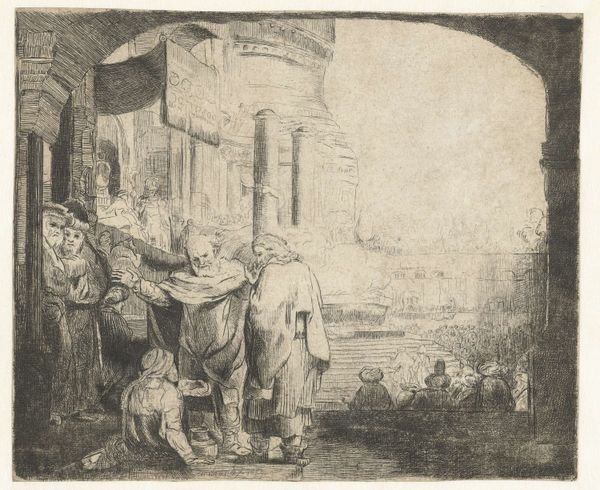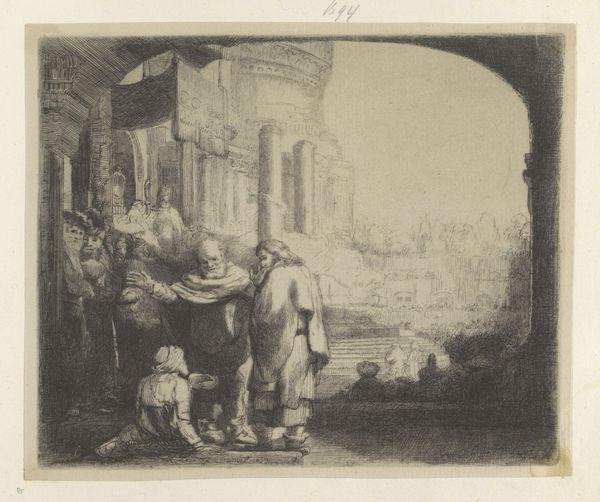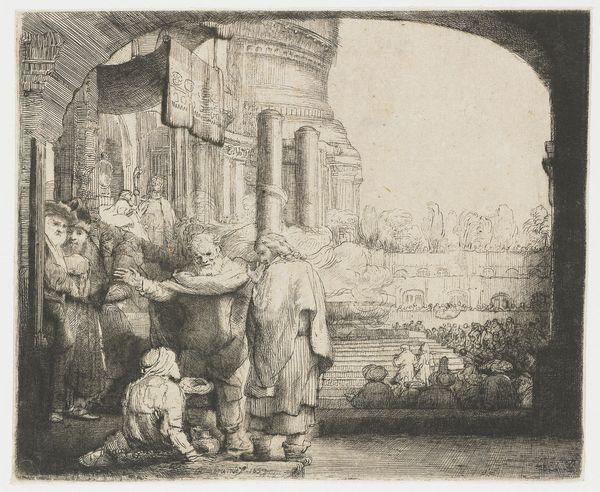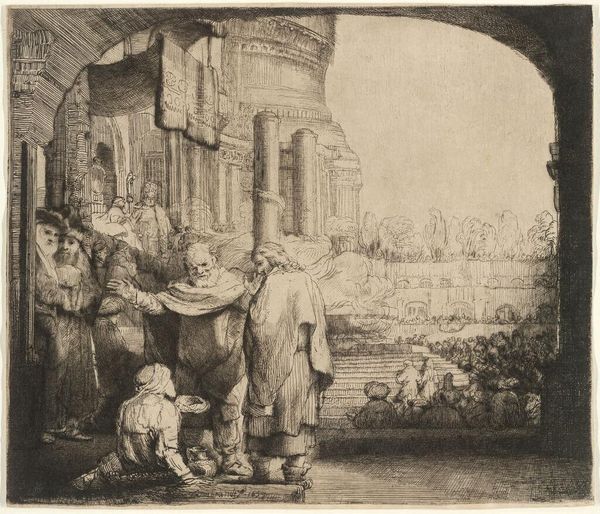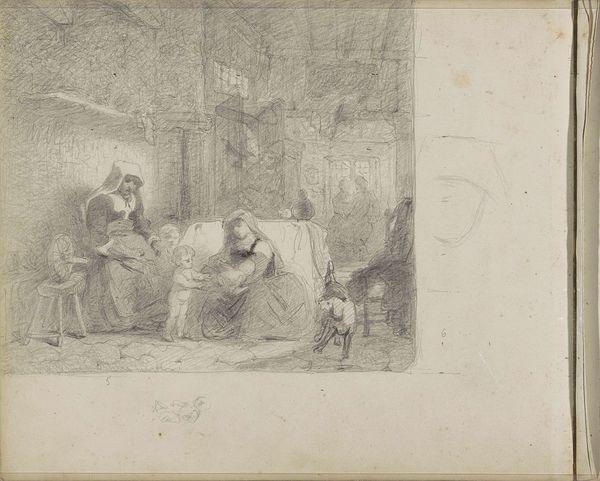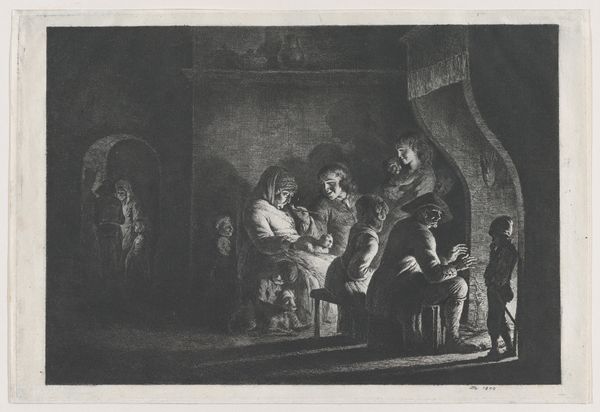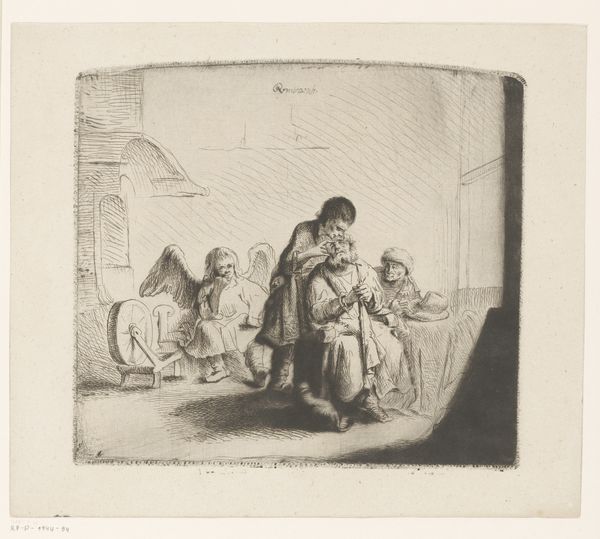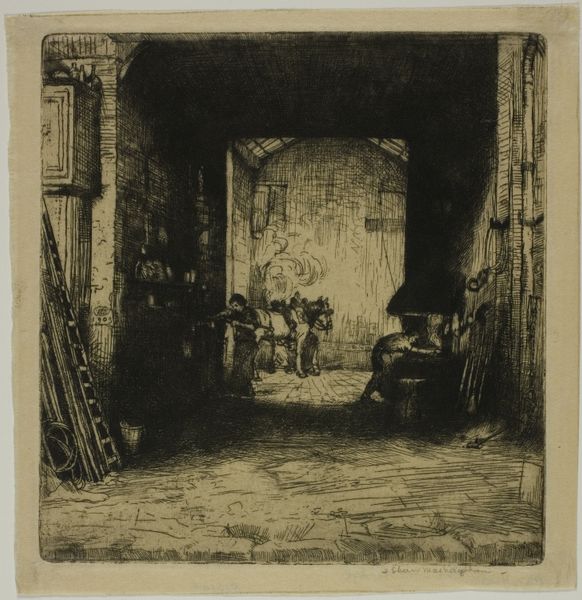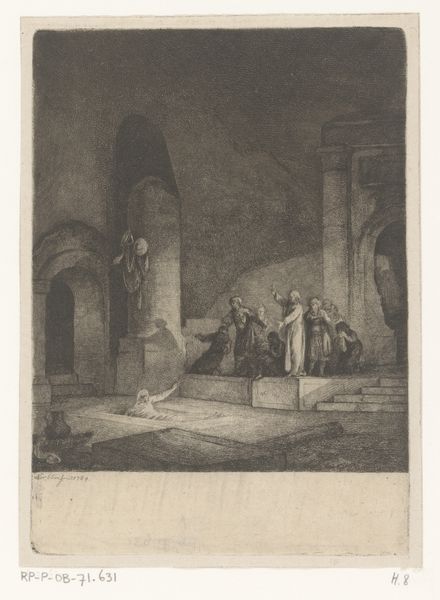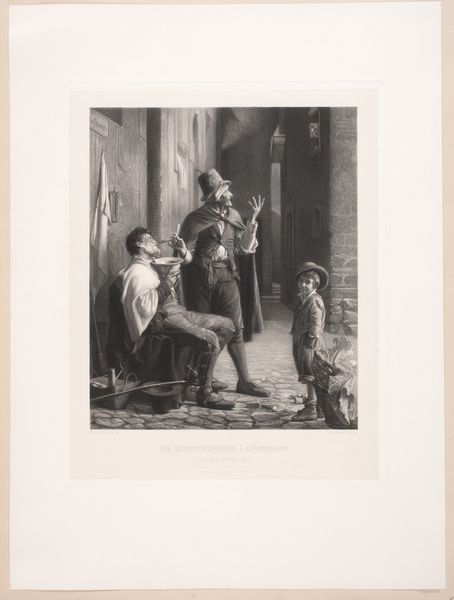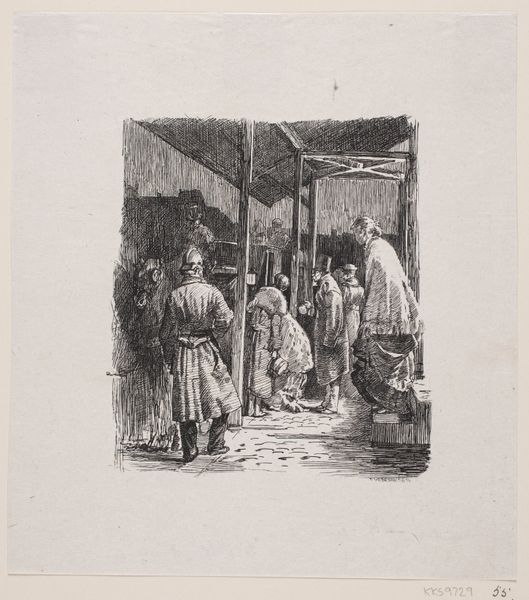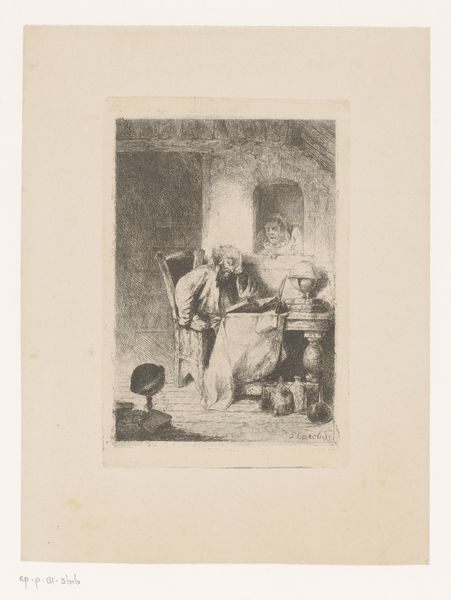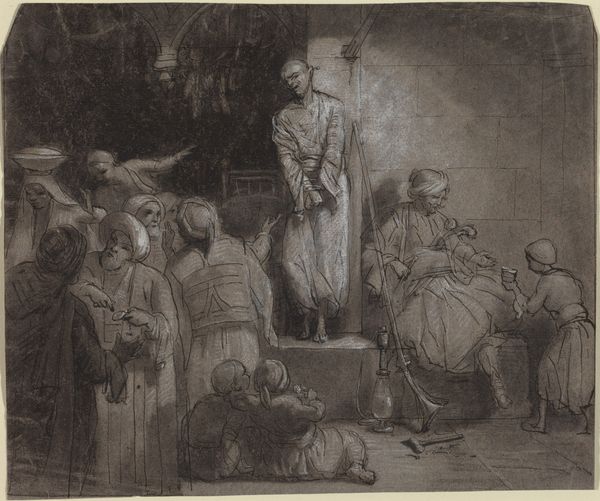
print, etching, engraving
#
narrative-art
# print
#
etching
#
old engraving style
#
figuration
#
pencil drawing
#
line
#
history-painting
#
engraving
Dimensions: height 177 mm, width 216 mm
Copyright: Rijks Museum: Open Domain
Curator: This print, currently housed in the Rijksmuseum, depicts Peter and John healing a paralyzed man at the temple gate. The etching or engraving—it is credited to an anonymous artist and dated after 1659—presents quite the biblical narrative. Editor: My first impression is one of dramatic chiaroscuro. The sharp contrast between light and shadow gives it a very intense, almost theatrical feel. It’s a masterclass in line work, wouldn’t you say? Curator: Absolutely. Considering it's a print, that stark contrast speaks volumes about the techniques used, especially regarding the multiple stages of biting if it is an etching. How were the various acid baths managed in the artist's studio? That’s the real magic here. Editor: You raise a very good point. Beyond the process, however, observe how the composition draws your eye into the central figures. The architecture, that massive temple gate receding into the background—it creates a sort of visual funnel, doesn't it? A clear structural organization to draw the eye towards the supposed miraculous moment. Curator: Indeed. And that architectural rendering—likely informed by the artist’s social circle, perhaps commissioned by a patron with specific expectations. What kind of marketplace existed for this imagery? Religious prints like this had social and even political implications; how might this impact our view of the work today? Editor: True. But let's not dismiss the pure visual impact. The sheer skill in capturing human anatomy, emotion, and narrative through such a precise and unforgiving medium—there’s an inherent elegance here. It's almost sculptural with the heavy shadowing and highlights. Curator: True, yet those humanistic considerations can feel like distractions. Let’s not overlook how this sort of historical rendering operates as a material object subject to the market conditions of the era—religious art serving social power. How it acted more as a commodity than spiritual artifact. Editor: Perhaps it’s both. It seems impossible to simply divorce material from aesthetic or even emotional power within a viewing experience. What’s especially compelling about this particular image is its successful combination of the narrative and architectural structure and the deep expressiveness that's communicated. Curator: Agreed, a compelling synthesis for further material inquiry. Editor: It does warrant much further exploration.
Comments
No comments
Be the first to comment and join the conversation on the ultimate creative platform.
